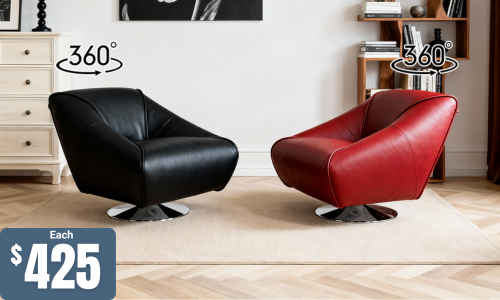Posts tagged with 'visual harmony'

When it comes to home decor, colour plays a crucial role in setting the mood and creating a harmonious ambience. The right colour scheme can transform a space, evoking emotions, influencing behaviour, and enhancing overall well-being. By understanding the principles of colour theory and how different colours interact, you can create a visually pleasing and balanced environment that reflects your personal style and enhances your everyday living experience. In this article, we will explore the fascinating world of colour theory and discover how to apply it effectively to your home decor.
Understanding Colour Theory
Colour theory is a discipline that explores how colours interact with one another and how they can be combined to create different visual effects. The three primary colours—red, blue, and yellow—form the basis of all other colours on the colour wheel. By mixing these primary colours, secondary colours such as orange, green, and purple are created. Tertiary colours are formed by mixing a primary colour with a neighbouring secondary colour on the wheel. Additionally, colour temperature—warm or cool—plays a significant role in setting the mood of a space.
Choosing a Colour Scheme
Before diving into colour selection, it's important to determine the mood and atmosphere you want to create in each room. Consider the function of the space, the natural lighting available, and the overall theme or style you wish to achieve. Here are a few popular colour schemes and their effects:
- Monochromatic: This scheme involves using various shades, tints, and tones of a single colour. It creates a serene and sophisticated ambiance, perfect for minimalist or modern interiors.
- Analogous: Analogous colours are adjacent to each other on the colour wheel. This scheme creates a harmonious and cohesive look while offering more variety than a monochromatic scheme. For instance, combining blue, green, and teal can create a calming and nature-inspired environment.
- Complementary: Complementary colours are opposite each other on the colour wheel, such as blue and orange or red and green. This scheme creates a vibrant and energetic atmosphere. However, it's important to balance the proportions of the complementary colours to avoid overwhelming the space.
- Triadic: Triadic colour schemes consist of three colours that are evenly spaced on the colour wheel. For example, combining red, yellow, and blue creates a dynamic and visually appealing look. Use one colour as the dominant hue and the other two as accents to maintain balance.
The Psychological Impact of Colours
Colours have a profound psychological impact on our emotions and behaviours. Understanding the effects of different colours can help you create the desired atmosphere in each room:
- Red: Associated with passion, energy, and warmth, red stimulates conversation and appetite. It's an excellent choice for dining rooms or areas where you want to create a lively and sociable atmosphere.
- Blue: Blue is calming, soothing, and often associated with tranquillity. It's ideal for bedrooms, bathrooms, or spaces where relaxation is a priority. Lighter shades of blue can also create a sense of expansiveness.
- Yellow: Symbolising happiness and optimism, yellow brings a sense of energy and positivity. It works well in kitchens, living rooms, or areas where you want to foster creativity and joy.
- Green: Green represents nature, growth, and balance. It promotes a sense of serenity and is perfect for bedrooms, home offices, or any space where you want to evoke a connection with the outdoors.
- Purple: Associated with luxury and spirituality, purple adds a touch of sophistication and creativity. It's a great choice for living rooms or spaces where you want to create a sense of elegance.
Balancing Colours in Space
While it's essential to choose the right colour scheme, achieving balance within a space is equally crucial. Here are a few tips for balancing colours effectively:
- Dominant Colour: Select one colour as the dominant hue and use it for larger surfaces such as walls or furniture. This establishes the overall mood and sets the tone for the space.
- Accent Colours: Introduce accent colours in smaller doses to create visual interest and focal points. These can be incorporated through accessories, artwork, or textiles.
- Neutrals: Neutrals such as white, beige, or grey provide a calming backdrop and help balance more vibrant colours. They can be used for larger surfaces or as a base for furniture and decor.
- Visual Flow: Ensure a smooth transition between rooms by using complementary or coordinating colours that create a sense of continuity throughout your home.
Colour theory is a powerful tool that can transform your home into a harmonious and visually pleasing sanctuary. By understanding the principles of colour interaction and the psychological impact of different hues, you can create an atmosphere that aligns with your personal style and promotes well-being. Whether you opt for a monochromatic scheme, analogous colours, or a dynamic triadic palette, remember to maintain balance and consider the function of each space. With a thoughtful approach to colour selection and composition, your home decor will radiate harmony and leave a lasting impression on all who enter.
Check out our products!

When it comes to interior design, furniture placement plays a crucial role in creating a visually pleasing and harmonious space. The arrangement of furniture not only affects the functionality of a room but also significantly impacts its overall aesthetics. Achieving balance and symmetry in furniture arrangements is key to creating a sense of visual harmony. In this article, we will delve into the importance of balance and symmetry, explore different types of balance, and provide practical tips on arranging furniture to create a visually stunning living space.
Understanding the Importance of Balance and Symmetry
Balance and symmetry are fundamental principles in design that create a sense of order, stability, and equilibrium. When applied to furniture placement, they ensure that a room feels cohesive and visually appealing. Without balance and symmetry, a space can appear cluttered, chaotic, or off-balance.
Balance refers to the distribution of visual weight in a room. Achieving balance involves arranging furniture and decor elements in a way that creates equilibrium and visual stability. Symmetry, on the other hand, involves mirroring objects or arranging them in a way that creates a sense of harmonious proportion.
Exploring Different Types of Balance
There are various types of balance that can be employed in furniture arrangements, each with its own unique aesthetic impact. Understanding these types will help you choose the most suitable balance for your desired style.
- Symmetrical Balance: Symmetrical balance is achieved by placing identical or similar objects in a mirrored arrangement. This type of balance is often associated with a formal and traditional aesthetic. For instance, a sofa flanked by two identical armchairs or a bed with matching nightstands on either side creates a symmetrical balance.
- Asymmetrical Balance: Asymmetrical balance involves arranging objects of different visual weight or size to create equilibrium. It can be achieved by distributing objects with varying heights, textures, or colors across a space. Asymmetrical balance allows for a more relaxed and informal look, adding visual interest and uniqueness to a room.
- Radial Balance: Radial balance is centered around a focal point, with objects radiating outward in a circular or spiral arrangement. This type of balance is often seen in rooms with a central point of focus, such as a dining table surrounded by chairs or a coffee table with seating arranged around it. Radial balance adds a dynamic and energetic feel to a space.
Practical Tips for Achieving Visual Harmony
Now that we have explored the importance of balance and symmetry, let's delve into some practical tips for arranging furniture to create a visually pleasing and harmonious space.
- Plan the layout: Before moving any furniture, create a rough sketch or use a digital tool to plan the layout of the room. Consider the size and shape of the space, as well as the function and flow you want to achieve.
- Start with the focal point: Identify the focal point of the room, such as a fireplace, large window, or entertainment center. Arrange furniture around this focal point to create a sense of cohesion and visual hierarchy.
- Consider traffic flow: Ensure that there is enough space for comfortable movement within the room. Leave clear pathways and avoid placing furniture in a way that obstructs the natural flow of traffic.
- Mix and match: Experiment with a combination of different balance types. For instance, you can place a large, visually heavy piece of furniture on one side of the room and balance it out with a group of smaller objects on the other side.
- Pay attention to scale and proportion: Ensure that the size of the furniture is appropriate for the space. Avoid overcrowding or leaving vast empty areas. Aim for a harmonious balance between furniture sizes to maintain a visually pleasing environment.
- Play with heights: Vary the heights of furniture and accessories to add visual interest. Mix taller pieces, such as bookshelves or floor lamps, with lower items like sofas or coffee tables. This creates a sense of vertical balance and prevents the room from feeling flat or monotonous.
- Consider color and pattern: Incorporate color and pattern in a balanced way. Choose a color palette that complements the overall style of the room and distribute it evenly throughout the space. When using patterns, ensure that they are proportionate and not overwhelming. A balanced distribution of color and pattern helps create a cohesive and visually pleasing atmosphere.
- Pay attention to negative space: Negative space, also known as empty or white space, is an essential element in creating balance. Allow for some empty areas within the room to give the eyes a place to rest. This helps prevent the space from feeling overcrowded and allows the furniture and decor elements to stand out.
- Experiment with furniture angles: Don't be afraid to angle furniture pieces slightly to add a dynamic touch to the room. Angled arrangements can create a sense of movement and energy while maintaining balance and symmetry.
- Use mirrors strategically: Mirrors not only serve a functional purpose but can also enhance the visual balance in a room. Placing a mirror opposite a window or focal point reflects light and creates a sense of spaciousness. Mirrors can also be used to visually balance asymmetrical arrangements by creating a mirrored effect.
- Edit and declutter: Regularly assess your furniture arrangement and remove any unnecessary or visually distracting items. Clutter disrupts visual harmony and can make a room feel chaotic. Streamline the space by keeping only essential pieces that contribute to the overall balance and symmetry.
Remember, achieving visual harmony in furniture arrangements is a creative process that requires experimentation and a keen eye for detail. Trust your instincts and have fun while arranging your furniture to create a space that reflects your personal style while maintaining a sense of balance and symmetry.




.jpeg)

 (3).jpeg)
